The use of poverty aesthetics in fashion has been a contentious subject for years, and if you spend enough time on Fashion TikTok, you’re bound to encounter debate around the topic. Brands like Golden Goose and Balenciaga are common examples of items made for the wealthy that are intentionally given a worn, grungy look. My personal - and somewhat unpopular - opinion is that I generally like trends that blur the lines between wealth and poverty. I’m all for normalizing wearing clothes even once they’ve become scuffed and start to fall apart, so seeing that in a luxury, high fashion space is validating. I had originally planned to explore the overall cultural and moral implications of this aesthetic, but I quickly became side tracked in my research when I learned about a certain controversial brand known for the '“poverty chic” look: Magnolia Pearl.
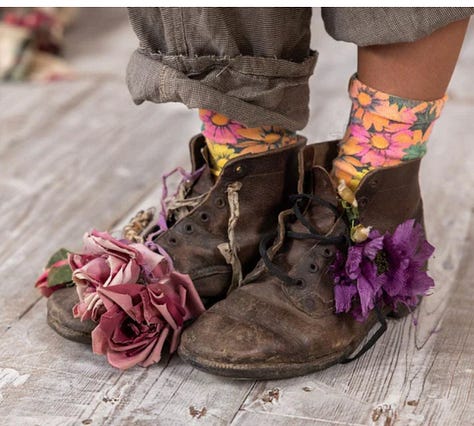

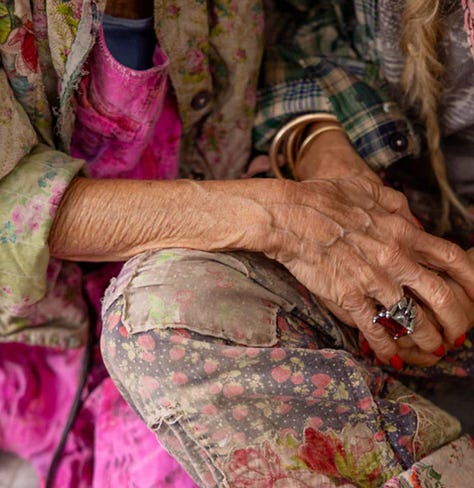



A quick look at the Magnolia Pearl website is enough to understand the brand’s aesthetic sensibilities. The landing page features a gallery of photos in which a blonde model poses whimsically beneath an arch of driftwood. The apparel on display is eclectic and bohemian, with layers upon layers of lace, eyelet and quilted fabric. She looks like if Alice stayed in Wonderland and became an artist. The words Magnolia Pearl Love Co. are imposed over the first photo in a font that mimics scratchy handwriting.
Throughout the brand’s site, the copy reads like a cross between prose and poetry. Regardless of your feelings around the brand, no one could argue that there isn’t a strong identity here. The About section describes Magnolia Pearl as “clothing intended to grace the vastness of the human expression, with an eye to sustainability and ease of movement.” Magnolia Pearl makes its own textiles, and the dyeing, fading, distressing, and detail work is all done by the brand. Designer and founder Robin Brown said in an interview that “These aren’t just cheap clothes that are cranked out… one dress can sometimes take up to 30 days to make.”
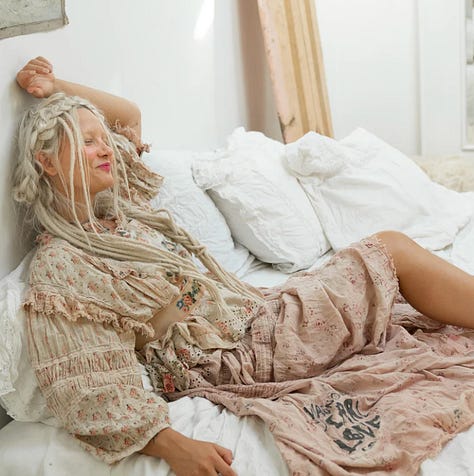
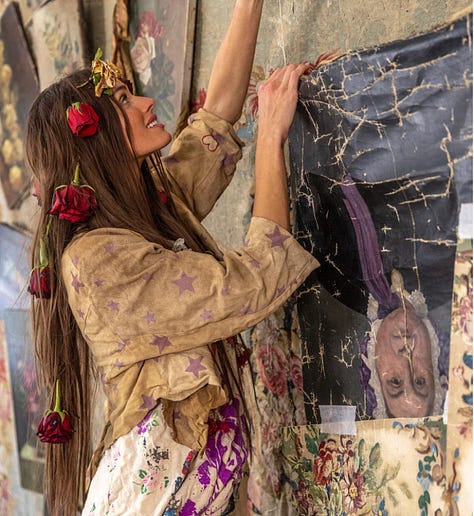

The price to buy into the world of Magnolia Pearl starts at $50 for a pair of floral socks, but can cost up to $1500 for a unique hat. Overall, you’re looking at around $125 for t-shirts, tops ranging from $200 to $400, and dresses and overalls in the $600+ range. Prices are comparable to brands like Ulla Johnson or LoveShackFancy. It’s certainly no Zara, but with nearly all pieces being under $1000, you’re getting quite a lot of detail and thoughtful design for your money.
Nonetheless, the price point has sparked outrage on social media. A quick look at comments on videos under the “Magnolia Peal” tag on TikTok shows how divisive the brand is. While some users were confused why anyone would pay thousands for outfits in this aesthetic, others were critical on a deeper level. They expressed resentment over the wealthy cosplaying the poor without doing anything to materially help the same people they are imitating. As one user put it: “Obsessed with how these same people who design or purchase this stuff are probably scared of the homeless.”
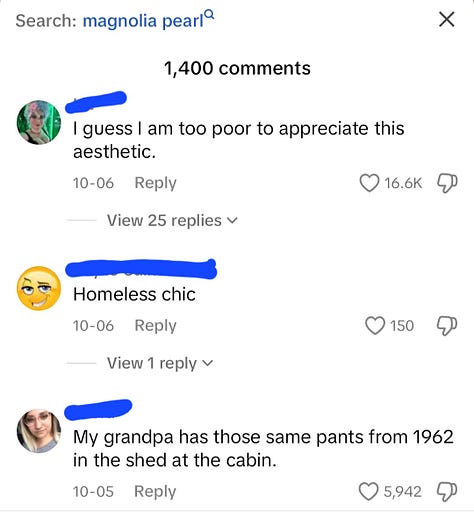
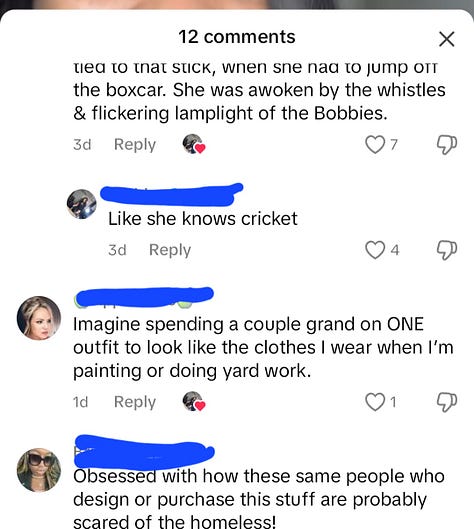

I feel like it’s important to note here that designer Robin Brown has shared her background, saying she experienced poverty and homelessness in childhood. Her aesthetic viewpoint was heavily influenced by her mom’s clothing business, where she bought used clothing by the pound and deconstructed them. Brown herself learned to make her own clothes and bags, and Magnolia Pearl was born after a stranger spotted her designs and insisted on purchasing one. Her aesthetic seems to stem from a place of authenticity, but the irony lies in the fact that it’s expensive to make “poverty-core” clothes. Hand-sewn details are going the be costly, but it seems easier to swallow that when the results are glamorous beading instead of patchwork overalls. The people who can afford a head-to-toe Magnolia Pearl look are not likely to relate to the inspiration it draws from.
Still, Magnolia Pearl has found a customer base. There are people who love the brand and happily pay for Brown’s pieces. Magnolia Pearl has been worn on many occasions by Taylor Swift, Whoopi Goldberg and Betsey Johnson. Johnny Depp is an especially big fan of the brand, and when he became aware of the controversy on social media, he went in front of the press to show off the Magnolia Pearl label on his clothes. Goldberg also came to the brand’s defense on Twitter, saying “Listen, I’m sorry. If everybody bitches about everything, we’ll all be naked. I love TikTok. I think it’s great but, you know, calm down.”
That being said, the people “bitching” on social media brought up some very valid criticism. Brown may have every right to use a poverty aesthetic, but her designs have also utilized inspiration that was not hers to draw from. Some social media users mentioned a “Plantation” collection, and I was able to verify that this was, in fact, the title and theme of Magnolia Pearl’s 2012 collection. The collection featured a video (disclaimer: I could not find the original so this link takes you to a TikTok featuring the video with voice-over criticism) of confused-looking white models in potato-sack dresses. They are trying to harvest potatoes with equipment that probably was not meant for the “work” they were pretending to do and that they definitely did not know how to use.
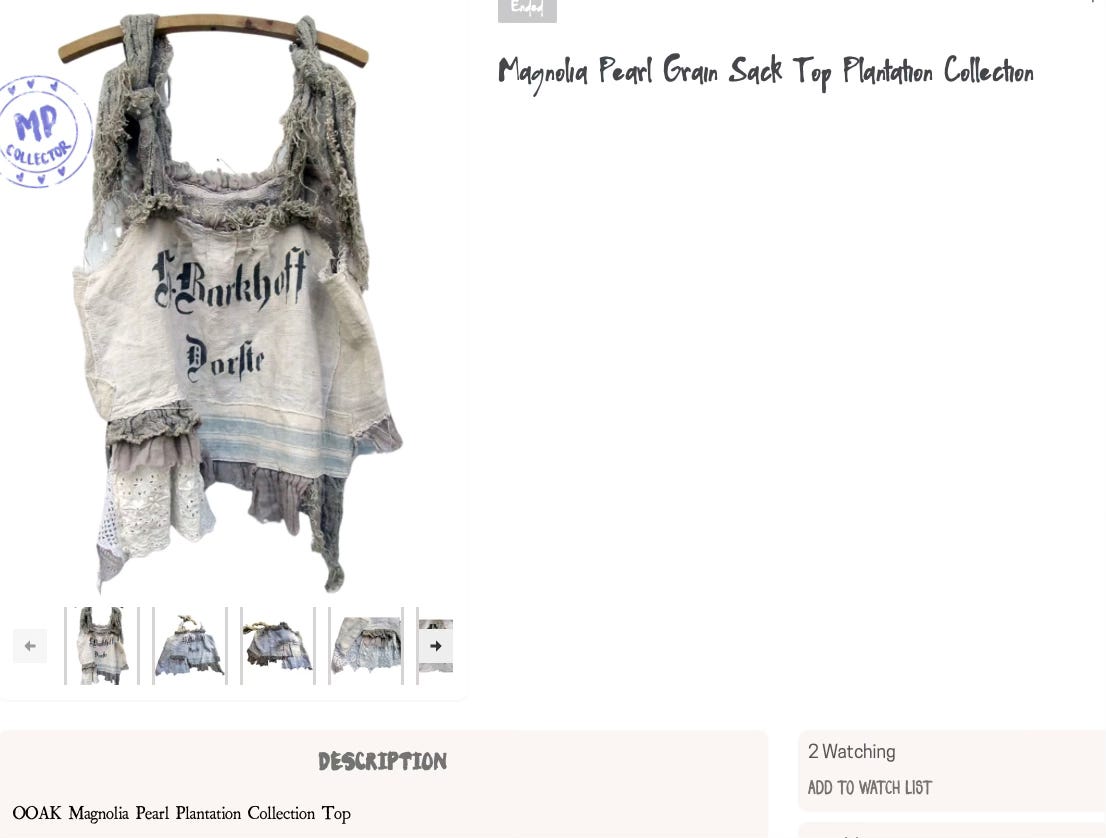
Yes, you read that correctly that it was white models only in the Plantation collection video. This was not an acknowledgment of an ugly history so much as a glossing over and romanticization of an evil institution.
The other collection that social media critics were quick to point out is the currently available “Dancing Spirit” collection featuring Indigenous American imagery and motifs. I went into this collection bracing myself for something as insensitive as the “Plantation” looks, but was pleasantly surprised. When you go to check out the “Dancing Spirit” lookbook, a banner at the top reads “a portion of the proceeds of Magnolia Pearl designs featuring Indigenous Americans goes to Musically Fed.” The collection stars an indigenous model, and Brown, who is proud of her Cherokee heritage, shares a statement about her intention behind the collection that is worth a read. Her thesis on the importance of remembrance and honor is supported by the details included in the actual product listings. For example, the “Great Spirit Linen Miner Pants” include information in the product description identifying the people in their Appliqué Portraits as “Chief Sitting Bull (Hunkpapa Lakota)” and “unknown Indigenous youth (photographed by Carl Moon in 1905, this Indigenous American man is either of Diné Navajo descent or was actually named Eskio Tobar, a Lipan Apache youth of Texas in Diné Navajo Dress).”
I’m skeptical by nature, so I sent an email asking for more information, and was surprised to receive a quick response from the brand’s Legal department. Due to the confidential nature of the communication, I will not be sharing any direct quotes or information that is not already publicly available. However, the person who wrote to me was very kind and happy to provide more information. They mentioned Magnolia Pearl’s Peace Warrior Foundation, which shares exact details about which organizations the brand supports and how much has been given each year. To date, the organization has given $300,000 to charities. There is a variety of causes, but feeding the hungry and supporting Indigenous communities seem to be a core value of the charity.
Personally, I don’t take issue with Magnolia Pearl’s overall “poverty-chic” aesthetic. I think there’s a dignity in reclaiming that look and giving it a place in high fashion. The price point seems fair for the detail and labor involved, and Robin Brown is drawing on her own experiences to create a brand with a distinctive point-of-view and values. The resulting look is not for everyone - it’s unapologetic, loud, and clearly meant to appeal to a niche audience rather than the mass market. I’ve avoided any critique on the actual fashion because my intention with this article is to explore the ethics of poverty aesthetics through the lens of one brand.
I really think there’s beauty to be found within the clothing details that result from poverty, and blurring the lines between people wearing the look by choice versus necessity can help to alleviate judgement towards those in the latter group. We frequently treat the trappings of the upper class as worthy of admiration and imitation, so why not give the same treatment to details associated with the working- and lower-class? Buying a disheveled-looking outfit from Magnolia Pearl does a lot less material harm than the inverse - buying a “Quite Luxury” look from Shein. Unraveling hems, sun-bleached fabrics, patchwork repairs, stains, and rips all have a place in fashion, and Magnolia Pearl is an interesting case study into how these elements can be used in a luxury space.




I'm a fan of Magnolia Pearl, though I only buy a piece a year. I don't see this as "poverty chic," and I certainly am not afraid to talk to homeless people (it's part of my job). Some of my MP pieces are getting worn, and I've discovered the joy of visible mending. Mending blends right in with the aesthetic, and I want to wear these pieces for many years.